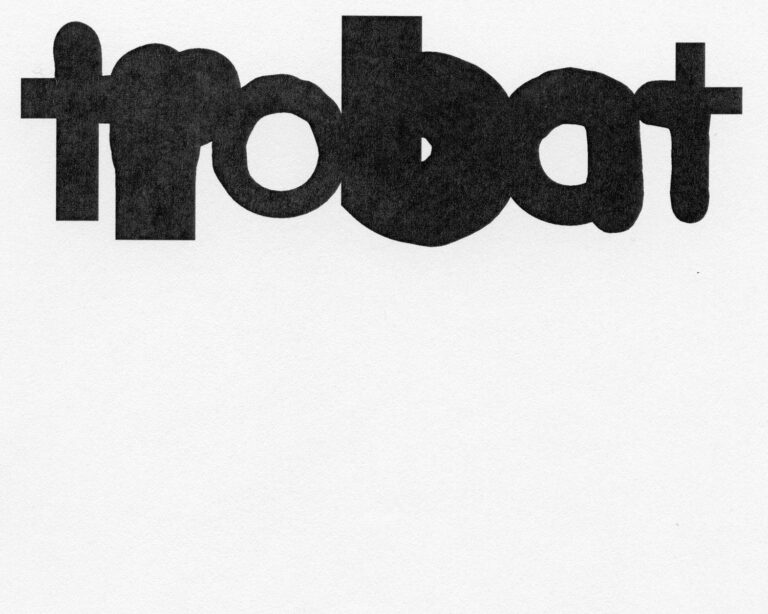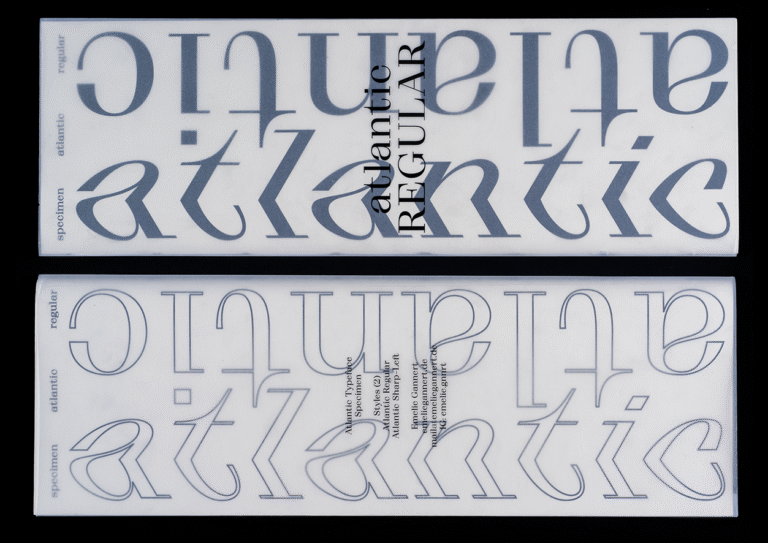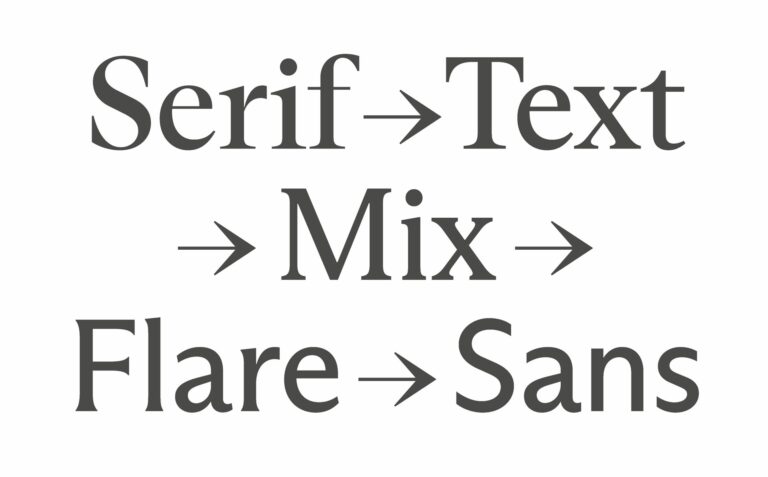In a world where design speaks louder than words, Blast Foundry — run by Barbara Bigosińska and Diana Ovezea — brings creativity to life with bold and versatile typefaces.
We’re proud to introduce Big Issue, a type family originally commissioned to meet the editorial needs of The Big Issue Magazine. Designed for versatility and striking headlines, Big Issue offers a powerful tool for any media platform. Now available to the public, a portion of the proceeds from this typeface will be donated back to support The Big Issue cause, helping to make a positive impact beyond design.
Join us as we hear directly from the two ladies of Blast Foundry, who kindly give us insight into the project’s scope and creative process.

Big Issue — A Type Superfamily With a Noble Cause
The Big Issue type family was born from a project deeply connected to the mission of The Big Issue magazine. Founded in 1991 by John Bird and Gordon Roddick, The Big Issue has served as a lifeline for individuals experiencing homelessness and poverty. The magazine empowers people by providing them with an opportunity to earn an income and reintegrate into society with dignity. As the world’s most widely circulated street newspaper, its influence is unparalleled, representing the power of social enterprise.
In 2021, as The Big Issue approached its 30th anniversary, the magazine underwent a significant redesign led by Pentagram’s Matt Willey. The goal was to create a bold new visual identity that would stand out on the streets. This is where our collaboration began. Working closely with Matt, we developed an ultra-heavy bespoke grotesque sans, aptly named Big Issue Fat, which became the visual foundation for the magazine’s new direction. This striking single weight set the tone for the entire redesign.

Following the success of the initial weight, Mark Neil, The Big Issue’s art director, approached us in 2022 to expand the single weight into a full family. The goal was to create a versatile type system that could meet the growing needs of both print and digital formats, while still reflecting the cultural significance and social mission of The Big Issue. This marked the beginning of the Big Issue type family, designed to support The Big Issue magazine in amplifying its message across all platforms. The typeface is yet to be implemented across all media, and you’re more likely to find it within the spreads if the print version at the moment.
Crafting the Typeface Family
Every custom type design project begins with a clear and detailed brief. Conversations with Mark Neil revealed the need for Display styles in multiple widths and Text styles, spanning weights from Light to Black, all including italics. While we followed the grotesque looks of the original Big Issue Fat typeface, we also aimed to root the new designs in British typographic tradition, reflecting The Big Issue’s cultural significance.
To achieve this, we turned to historical specimens from H. W. Caslon & Co., Miller & Richard, and Stephenson, Blake Co. This blend of historical inspiration and modern functional needs guided the design process, resulting in a type family that is both adaptable and culturally resonant.

For hands-on testing, we created a variable font prototype with adjustable weight and width axes. This gave Mark the ability to explore endless combinations, helping identify which exact widths and weights worked best for specific use cases across the publication. This flexible approach informed the development of the various sub-families, and removed the usual guess work, ensuring that the final designs were tailored to meet the magazine’s needs.

Designing Display and Text Styles
When the widths and weights choices became clear, we moved on to define smaller details, individual letter shapes, and the differences between Text and Display versions.
We designed the Display styles first, since these were set to define the core identity of the family. We proposed three stylistic directions, each with unique characteristics:
Version 1: Low contrast with the typical grotesque look, featuring straight spurs.
Version 2: Higher contrast with a slightly quirky look and wedged spurs.
Version 3: Low contrast with tapered outstrokes and straight spurs.


After client testing and iterations, we selected Version 2, which maintained the lowered contrast of Version 1 while incorporating a distinctive personality. The Display styles span three widths — Standard, Wide, and Xwide — featuring thin punctuation and symbols for large headlines. These styles were designed to make an impact, ensuring that the magazine covers and key features captured the reader’s eye with clarity and boldness.
The Text styles were developed for optimal readability and accessibility in mind. With taller ascenders, higher contrast in the Black weight, and slightly more opened apertures, we ensured the typeface remained legible even when used at small sizes. A variable font with a ‘spur’ axis helped us test and refine the size of the spurs. The sharper spurs in the Text styles enhance small-size rendering and definition, ensuring clarity across all uses.

Alternates and Spacing
We explored multiple alternates of letters, numbers, and even some punctuation signs. Together with Mark, we chose the ones that work best. To bring even more versatility, we included a full set of thin symbols (like parentheses, slashes, and and arrows) and a set of alternate thin accents, which would allow for tighter leading or a more impactful look in some contexts.
Text styles have slightly wider spacing compared to Display styles, which is essential for maintaining readability and rhythm in longer passages or smaller text sizes, ensuring clarity across all media. We paid careful attention to every character, ensuring that the typographic texture was harmonious and visually balanced, regardless of the medium or application.

Narrow Styles and Italics
Though initially only one narrow weight was commissioned, we expanded the Narrow styles into a full sub-family. Using our variable font prototype, we determined the optimal level of narrowness, carefully balancing compactness with readability and aesthetic consistency. The Narrow styles belong to the Display sub-family and, hence, also include thin symbols and punctuation sets, offering additional flexibility for various layout constraints.
Italics were created for all styles, with Display and Text styles at a 12-degree slant, and Narrow styles at a steeper 18-degree slant for a more dynamic look. In variable font format, the slant angle can be adjusted, offering designers the flexibility to choose between 0 and 18 degrees for Narrow styles, and 0 and 12 degrees for Display and Text styles. This flexibility allows designers to tailor the typeface to their specific design needs.
All styles include alternate characters accessible via OpenType features, offering versatility for different uses:
Set 1: Alternate I with serifs.
Set 2: Alternate Q with a tail #2.
Set 3: Alternate thin punctuation and symbols (Display and Narrow only).
Set 4: Alternate taller parentheses, bars, and slashes (Display and Narrow only).
Set 5: Alternate single-storey a.
Set 6: Alternate double-storey g.
Set 7: Alternate thin accents (Display and Narrow only).
Set 8: Alternate 1 with serif.
Set 9: Alternate 2.
Set 10: Alternate closed 4.
Set 11: Zero with dot.

Supporting a Cause
From the outset, we knew that the Big Issue type family had the potential to extend beyond its initial purpose. Its versatility allowed us to share the typeface with a wider audience while continuing to support The Big Issue’s mission. As part of this effort, we pledged to donate 10% of every sale back to the Big Issue Foundation, a decision that aligns with our values and the spirit of the project.


Designing the Big Issue type family was a long and rewarding journey. Working with Mark Neil and the entire Big Issue team was an exceptional experience—their quick feedback and deep respect for our craft enabled us to bring our best work to the table. We’re proud to support such a meaningful cause through our design. The Big Issue type family merges historical inspiration with modern functionality, resulting in a versatile and distinctive typeface.
To us, this project exemplifies the potential of typography as a force for social good. The typeface not only enhances the visual identity of the magazine but also stands as a symbol of hope for its vendors. Making the typeface contemporary allows for better visibility from readers, more streamlined and professional look, hopefully attracting more readers and ultimately more help for the vendors. Through thoughtful design and collaboration, the Big Issue type family showcases how design can drive social change and make a lasting impact.
Looking Forward
The Big Issue’s internal team is currently working on adopting the new type system as part of a broader update in content and design. While the process is still underway, we’ve already released the fonts in our store because we’re excited to get them into designers’ hands and help bring more awareness to The Big Issue’s mission. The visuals shown throughout this article are fictional mock-ups, created to showcase what’s possible. We can’t wait to see how the real-world rollout evolves in the months ahead.
We invite you to test and explore the Big Issue superfamily and Big Issue Text. To celebrate this significant release, we’re offering 50% OFF on the first 50 purchases. Simply use code BIGISSUE50 at checkout.
Discover Big Issue.
Discover Big Issue Text
Type Design: Diana Ovezea and Barbara Bigosińska
Type Foundry: Blast Foundry
Graphic Design: Marie Santi
Historical Research: Lora Shtirkova
Assistance with Italics: Ethan Nakache

Enjoyed this piece? Read more typeface design editorials here.




